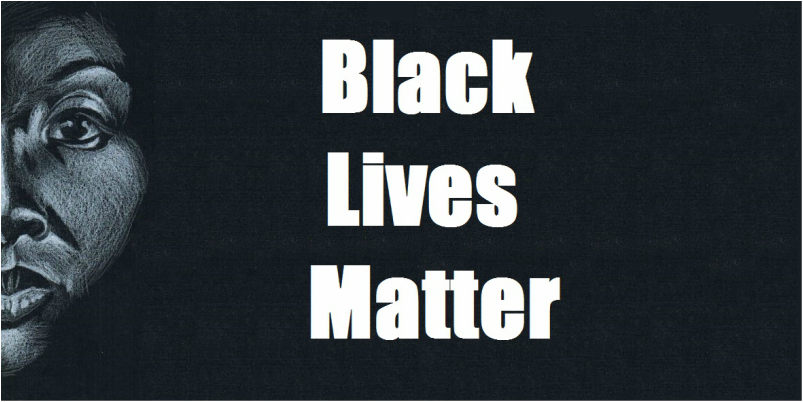|
For many, the election of Donald Trump as the next President of the United States signals a return to more overt policies of discrimination against historically marginalized communities. The prospect of criminal justice reform seems particularly bleak under a Trump presidency. But people forget that social and political change are not exclusively the result of presidents wielding power. Social movements and other forms of popular resistance have often served as important catalysts for profound ideological and structural changes, and there is perhaps no better contemporary example than the Black Lives Matter movement.
As it happens, Donald Trump's ascendancy comes at a precarious time for Black Lives Matter because the movement appears to be engaged in an attempt to introduce a new strategy. In the immediate aftermath of officer Darren Wilson killing Michael Brown in Ferguson, Missouri, Black Lives Matter focused on getting the word out and convincing the American public that black and brown people are the disproportionate targets of police violence. More recently, however, activists have been trying to get people within the movement elected to public office at all levels of government. This podcast is the second of two parts featuring Dr. Rashawn Ray, Associate Professor of sociology from the University of Maryland. In part 1, Lester Andrist sits down with Rashawn Ray to discuss what makes police violence institutional and what institutional racism looks like in the United States. In this latest installment, Dr. Ray discusses the success of the Black Lives Matter movement and whether it will continue to be an effective force for promoting social and political change under a Trump presidency.
You can find ten policy proposals for reforming the criminal justice system on the Black Lives Matter Campaign Zero website. We used an excerpt from an interview with DeRay Mckesson on RT's program Watching the Hawk. You can find the full interview with Mckesson here. Music from http://www.bensound.com. Banner art from Abigail Southworth
Glance at the news or scroll through your Twitter feed and you're likely to encounter stories about racism in the criminal justice system. Alton Sterling, Philando Castile, Korryn Gaines, and Mike Brown are just a few of the names of African Americans who have been victims of police violence. One recent study demonstrated that Black males are 21 times more likely than white males to be killed by a police officer, and social class offered no protection. High-income Blacks were just as likely as low-income Blacks to be killed.
Despite these grim figures, it's also the case that the way police violence is discussed in the public is problematic. The problem is too often framed as one about bad officers, when it would be more accurate to talk about a bad system, or as sociologists would point out, a racist institution. This podcast is the first of two parts. In part 1 (below), Lester Andrist sits down with Rashawn Ray, Associate Professor of sociology from the University of Maryland, and the two sociologists discuss what makes police violence institutional, what does institutional racism look like, and what can be done about it. In part 2 the discussion continues as Dr. Ray offers his thoughts on the effectiveness of the Black Lives Matter movement.

You should know by now that we, like most sociologists, are obsessed with The Wire. In the past, we mentioned a variety of syllabi using the The Wire, noted an academic conference on The Wire, and hyped a scholarly collection of resources on The Wire. But given our site's main purpose--teaching and learning sociology through video—we especially love The Wire that are useful for teaching important sociological concepts. In this post, we curate these posts based on key concepts.
Class and Class Consciousness In this scene from season 1, D'Angelo teaches Bodie and Wallace how to play chess. D'Angelo likens each chess piece to a member of the gang hierarchy, illustrating the class structure and his consciousness of it. For example, the king is at the top of the hierarchy and allowed to do what he wants, the queen moves where ever she wants and gets work done, while the pawns protect the king. The clip goes further to demonstrate D'Angelo class consciousness, or how the class structure affects each person within the class hierarchy. He notes there is little mobility within the structure: "the king stay the king" even though he "doesn't do shit" and "everything stay who he is." Bodies resists this view of class, holding onto the ideology of the American Dream, and argues that "some smart ass pawns" can climb the hierarchy:
Exploitation
In this scene from season 1, the characters discuss value and production within capitalism. While enjoying a fast food lunch, Wallace suggests that whoever invented Chicken McNugges must be extremely rich because of their popularity, but D'Angelo explains that the worker who invented chicken McNuggets "is just some sad ass sittin' in the basement of McDonalds thinkin' up some shit to make some money for the real players." This reflects Marx's theory of value and exploitation, which explains how capitalism is structured to extract value from the workers (the true source of value) and funnel it into the hands of the owners (i.e. "Ronald McDonald" or more accurately, the stockholders). When Bodie responds "that ain't right", D'Angelo says "Fuck right. It ain't about right; it's about money" and explains that whoever invented the McNuggets is still "working in the basement for regular wage thinking of some shit to make the fries taste better."
Cultural Capital
Cultural capital refers to knowledge, skills, tastes, and dispositions necessary to succeed in a particular context. The concept is used to help explain economic inequality. For example, the cultural capital in this scene at a fancy restaurant (e.g. knowing appropriate behavioral norms, understanding menu items, being comfortable in that setting) could be helpful in a professional job interview or networking. Here, ex-cop turned public school teacher Howard "Bunny" Colvin has taken it on himself to help reach the badly underprivileged children who have been deemed essentially unteachable by their West Baltimore junior high school. After his students do well on a project, Colvin decides to take them out to dinner at an upscale restaurant. Initially the students are excited and pleased--but over the course of the meal they become increasingly uncomfortable and discouraged. Due to their lack of cultural capital, Bunny's students are clearly uncomfortable and feel a sense of powerlessness (see the full post from Sara Wanenchak). The beginning of this second clip also shows how the students lack the cultural capital of professional settings. For example, they speak out of turn, disrespect authority, and speak inappropriately for the context. But when Bunny Colvin asks the students what makes a good "corner boy," the students come alive and quickly describe the necessary traits: "keep the count straight," "don't trust nobody"; and "keep your eyes open." Their knowledge about, and interest in, working the corner illustrates the cultural capital that the teenagers possess. It is useful in navigating the streets and being a successful member of the drug-dealing gang hierarchy. The issue is that broader society does not value this form of cultural capital, which is possessed more by poor, inner-city children. Instead, society values the kinds of cultural capital that are more common middle-class suburban schools and families. In other words, the problem is not that the boys do not have any skills, but they do not have a certain type of skills. The different values placed on cultural capital more common among middle-class families illustrate how they are more likely to reproduce their class position, thus reinforcing the class structure across generations.
Crime and Rational Choice Theory
In The Wire, Omar is a Robin Hood-esque individual who incessantly steals drugs and money from Avon Barksdale’s gang. In these two snippets from season 1, we first see Omar and his crew at night preparing to steal drugs/money (or “the stash”) from one of the Barksdale sites. Then the next day we see Omar and his crew try to carry out their plan. These scenes are an excellent illustration of rational choice theory, which purports that individuals are generally rational, potential criminals, who would engage in crime if they could get away with it. In other words, we have a sense of free will and weigh the pros and cons that go into committing different crimes. Rational choice theory, however, has a robust range of components. Specifically, all of us are potential criminals who 1) consider how crime is purposeful; 2) sometimes have clouded judgement about crime due to our bounded rationality; 3) make varied decisions based on the type of crime being considered; 4) have involvement decisions (initiation, habituation, and desistance) and event decisions (decisions made in the moment of a crime that should reduce the chances of being caught); 5) have separate stages of involvement (background factors, current life circumstance, and situational variables); and 6) may plan a sequence of event decisions (a crime script). (See the full post from David Mayeda).
Crime and Strain Theory
Robert Merton’s strain theory was an early sociological theory of crime. Merton argued that mainstream society holds certain culturally defined goals that are dominant across society (e.g. accumulating wealth in a capitalist society). His strain theory focused on whether an individual rejects or accepts society’s cultural goals (wanting to make money) and the institutional means to attain those goals, resulting in a typology of criminals and non-criminals: 1) Conformists; 2) Innovators; 3) Ritualists; 4) Retreatists; and 5) Rebels. In this first clip, gang leaders Avon Barksdale and Stringer Bell debate how they can reclaim their top “real estate” for selling heroine. Avon states how he is a gangster, or from Merton’s perspective, an innovator. In contrast, Stringer Bell pushes to work with Marlo (another gangster not shown in these scenes) and eventually desist from the drug trafficking scene, making “straight money” as a conformist.. (See the full post from David Mayeda) In the second clip, Johnny and Bubbles (two drug users in the show) debate how to make money, with Bubbles wanting to get paid helping the police, thus working toward being a conformist. But Johnny ultimately convinces Bubbles to help him innovate through petty crime simply to feed his addiction.
Other Concepts and Videos
Of course, The Wire is useful for teaching numerous other sociological topics as well. For example, concepts such as residential segregation, mass incarceration, the war on drugs, hyper-masculinity, and neo-liberalism are evident throughout the entire show. In addition, a variety of supplementary videos are helping for understanding the context of Baltimore or to document broader patterns in a non-fictional context. Viewers may also want to check out Al Jazeera's news documentary on the drug war in Baltimore or this news clip on the use of the "n-word" in pop culture. This scholarly collection of resources on The Wire from The Centre for Urban Research can be useful for identifying further academic and multimedia resources for understanding and analyzing the show. What videos and resources have you found useful for watching The Wire in an academic context? Paul Dean Paul Dean is co-creator and co-editor of The Sociological Cinema, and an Assistant Professor of Sociology at Ohio Wesleyan University.
Originally posted on Cyborgology
Recently I saw an episode of TLC’s “My Strange Addiction,” (lets not go into how exploitative this show is) and was first introduced to a man named Davecat. Davecat is a man with a synthetic partner, a growing trend where people marry anatomically correct, fully functional, mostly silicon, lifesize sex dolls. I call them sex dolls because they are clearly created in the image of a sexualized female ideal (i.e., small hips, large breasts, busty lips, flawless skin, long legs).
Now this is just the latest trend in a long list of what many would call “strange” new types of marriage unions. For instance, a few years back I remember a young man in Japan marrying a Nintendo DS character, and there is Zolton, the man who married a robot he built for himself, and the young man in Korea who married an anime character on a body pillow. Synthetic partners appear to be a growing trend, or else these relationships have simply become more visible as of late. There are several companies now specializing in these types of synthetic, lifesize dolls. There is Sinthetics brand, which appears to specialize in the pornstar variety (i.e., unnatural proportions and exotic features), and there is RealDolls, made famous by the BBC Documentary “Guys and Dolls”, and the countless, extremely creepy, celebrity sex dolls you can buy at most adult stores. Now these trends play into what some have called “robot fetishism,” or “technosexuality.” According to the Wiki, this fetish is based on a sexual attraction to humanoid robots, or to humans dressed up like robots. We can see these sorts of anthropomorphic portrayals of humanoid robots in Svedka advertisements, in several popular anime series, and in music videos. But what does it mean when the majority of media representations of robot fetishism are from a male perspective? Are the majority of cases actually male or is this simply a case of phallogocentrism? And why are women’s bodies so often portrayed in sexualized robot form? What does this tell us about our culture, gender, and sexuality? Finally, how has human sexuality changed as a result of these sorts of technological advancements?  A very unnatural Real Doll A very unnatural Real Doll
Although some claim that humans react to real dolls because of our instinctual desires for abnormal, idealized, “freakish” proportions, much like an Australian jewel beetles reacts sexually to beer bottles. I personally think robot fetishism may stem from a desire for control and passivity in one’s partners. Though this is clearly not the case for all individuals with synthetic partners (I am sure many people are just lonely and tired of searching for a partner), it appears to clearly be the case for men like Gordon Griggs.
But there does seem to be a preponderance of males with female synthetic partners and a minority of females with male synthetic partners (Though they do sell male Real Dolls, after all). What does this tell us about gender, power, and culture? I would argue that this overwhelming male bias stems from male privilege, or the belief that men are entitled to females as sexual partners. Tiring of rejection and refusal from human lovers, many men turn to synthetic ones. Watching some of the interviews with RealDoll owners contained in the BBC documentary lends me to come to this conclusion. The men contained in the film, from socially-awkward loners to jilted lovers, all seemed to have psychological issues stemming from alienation and the inability to achieve societal expectations in coupling. Several of the men had girlfriends when they were younger, but had since become recluses unable to talk to women. Other men were simply controlling and abusive, and turned to synthetic partners because they “can’t say ‘no’” like living women can. In conclusion, I find myself lamenting the liberatory possibilities of Haraway’s “Cyborg Manifesto”. Rather than seeing the coupling of human and machine as something which frees us from various forms of oppression (e.g., gender, race, age, infirmity), I see the phallogocentrism of robot fetishism in the mass media as myopic, exploitative, and reinforcing of existing gender oppressions. Namely, these trends reinforce the objectification of women, male sexual entitlement, and controlling behaviors in men. Dave Paul Strohecker (@dpsFTW) David Paul Strohecker is a fourth year PhD student at the University of Maryland in College Park. He studies cultural change, conflict, and social theory, with an emphasis on the role of the media, consumer behavior, and deviant subcultures.
Originally posted on Teaching TSP
This podcast could also be paired with several other activities on Teaching TSP, such as the following two activities about the Milgram experiment and an activity about power. Obedience to Authority
Any discussion about why people commit war crimes can easily be linked to Stanley Milgram’s famous experiments. As many (if not all) of you know, Milgram designed a series of experiments to see whether people would shock others up to lethal levels when instructed to do so by a scientist. In most cases and depending on various situational characteristics, the majority of people complied, showing they would shock someone up to lethal levels. (You can read more about the experiments on A Backstage Sociologist post, found here.)
A BBC documentary covered an effort to recreate the experiment a few years ago, which found similar results (with a small number of total participants, however). The entire documentary is on YouTube, but if you’re worried about time, this 6-minute clip shows the actual experiment and includes brief discussions about authority.
This clip is a great way to kick off a discussion about authority and, in the case of Dawes’ podcast, to begin to illustrate why human rights violations may take place. This clip can also be linked with a discussion about Weber’s types of authority. Power
Hollie Nyseth Brehm Hollie Nyseth Brehm is a Sociology Ph.D. Candidate at the University of Minnesota. She studies human rights and law, international crime, representations of atrocities, and environmental sociology. Her dissertation examines the conditions and courses of genocide in Bosnia, Rwanda, and Sudan; and she is the graduate editor of The Society Pages. When arriving at the dating age, I remember asking friends and relatives how I should act while on this date and common responses were usually “don’t hold back,” and/or “just be yourself,” “act natural.” But I already knew better than to literally take them at their word—particularly when it came down to expressing vital bodily functions. In the top clip from Sex and the City, Carrie lets one accidentally slip while in bed with Big during the early stages of their relationship, and her embarrassment, much to his delight, is palpable and lasting. In the bottom clip, the young woman is at first put-off when her boyfriend shamelessly farts. However, following his suggestion, she then comes to “act natural,” and indeed, to repetitively embrace the act—much to his chagrin.
While the bottom clip humorously indicates the normative double-standard, it can also function as an illustration of a breaching experiment. Harold Garfinkel’s ethnomethodological perspective emphasizes understanding social reality as humanly constructed and hinged on unspoken social norms. The significant power of such norms is revealed by first deliberately violating or “breaching” them and then observing how others react in turn (see Garfinkel, 1967).
References
Kim Bryant Kim Bryant is a graduate student at the University of Texas, San Antonio and is currently majoring in Sociology. Besides going to school full-time, she works as a teacher's assistant and in the United States Air Force Reserve Corps. |
.
.
Tags
All
|








 RSS Feed
RSS Feed